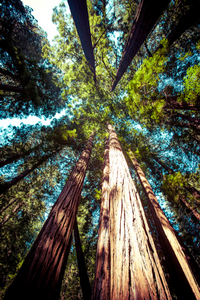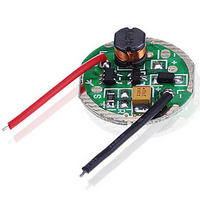|
LEDs today have an expected useful life of around
50,000 hours, or 25 years
of normal usage. When compared to an incandescent light source of equivalent output, it will continue functioning
near on average 50 times longer --that is HUGE! But like everything in life there are some significant caveats
to that longevity.

The first being is that LED chips must be integrated to
a well designed LED thermal management system (heat sink and/or fan) or premature failure is virtually guaranteed.
Though visible lighting LEDs produce no infrared radiation (IR) so they are cool to the touch, they do produce heat. In fact,
approximately only 25% of the electrical power applied to an LED results in visible light. The
remaining 75% is converted to heat --not scorching heat like in an Edison type light bulb, but heat nevertheless. And this heat
must be efficiently drawn away from the LED chip itself (the "junction") or the
theoretical maximum life span will not be achieved.
A second determining factor is the design and quality of the "driver" --the essential component that tightly controls the amount of electrical current flow to the LED itself--
 plus all associated and needed electronics (i.e. capacitor, DC power supply that converts AC power to DC power, etc.)
plus all associated and needed electronics (i.e. capacitor, DC power supply that converts AC power to DC power, etc.)
If any of these components have
MTBF
hour ratings lower than the LED chip itself, then system failure will happen earlier than stated specifications.
Yes these components can be replaced, but generally for most luminaire designs, the time and effort required to do so would not be cost justified.
As for ruggedness, since
LEDs produce light without glass parts, filament, or special gas, short of physical
destruction of its circuit board no amount movement or jarring will stop it from functioning.
Thus if a LED lighting luminaire's design approach is taken as a whole system with performance determined only by the sum-of-its-parts,
this light producing technology will last years longer than any other source available today.
|